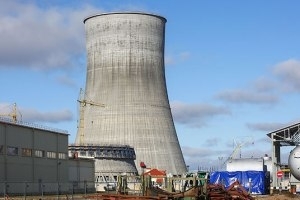Ru
|
Eng
Belarus to phase out ineffective power plants after launching nuclear one
01.06.2016

The construction of the Belarusian nuclear power plant will not result in a surplus of electricity, BelTA learned from Belarusian Deputy Energy Minister Mikhail Mikhadyuk during the Atomexpo forum in Moscow on 31 May.
The official said that electricity is produced in amounts meant to match electricity consumption. With the launch of the Belarusian nuclear power plant more power-generating installations will be available but less effective ones will be turned off.
A program has been adopted in Belarus to integrate the nuclear power plant into the national power grid. As part of the program transition to technologies that require electricity will be encouraged in some areas of life. “It is necessary for the sake of reducing the import of energy resources,” specified the Belarusian Deputy Energy Minister. These measures will be implemented not only by the Energy Ministry but also other ministries and government agencies.
Mikhail Mikhadyuk pointed out that investments in the construction of the nuclear power plant already positively influence the national economy. So far about 36% of the total volume of construction and installation work has been done. As much as 83% of the work has been done by Belarusian construction companies. “The level of localization is very high. Besides, the construction project uses domestic construction materials such as cement, sand, gravel, and rebars. Many Belarusian companies have won tenders to supply equipment to the Ostrovets nuclear power plant. Belarusian specialists have mastered a new kind of energy industry construction services. I think our Russian colleagues will be inviting our specialists for implementing other projects. It is a good school, too,” he noted.
The Belarusian nuclear power plant is a project to build an AES-2006 type nuclear power plant 18km away from Ostrovets, Grodno Oblast. The BelNPP will have two power-generating units with the total output capacity of up to 2,400MW (2x1,200MW). In line with the general contract for building the nuclear power plant the first power-generating unit is scheduled for commissioning in 2018, with the second one to go online in 2020.
BELNPP: NEWS FROM CONSTRUCTION SITE
23.07.2024
11.07.2024
28.06.2024
06.06.2024
04.06.2024
04.06.2024
03.06.2024
24.05.2024
23.05.2024
03.05.2024













